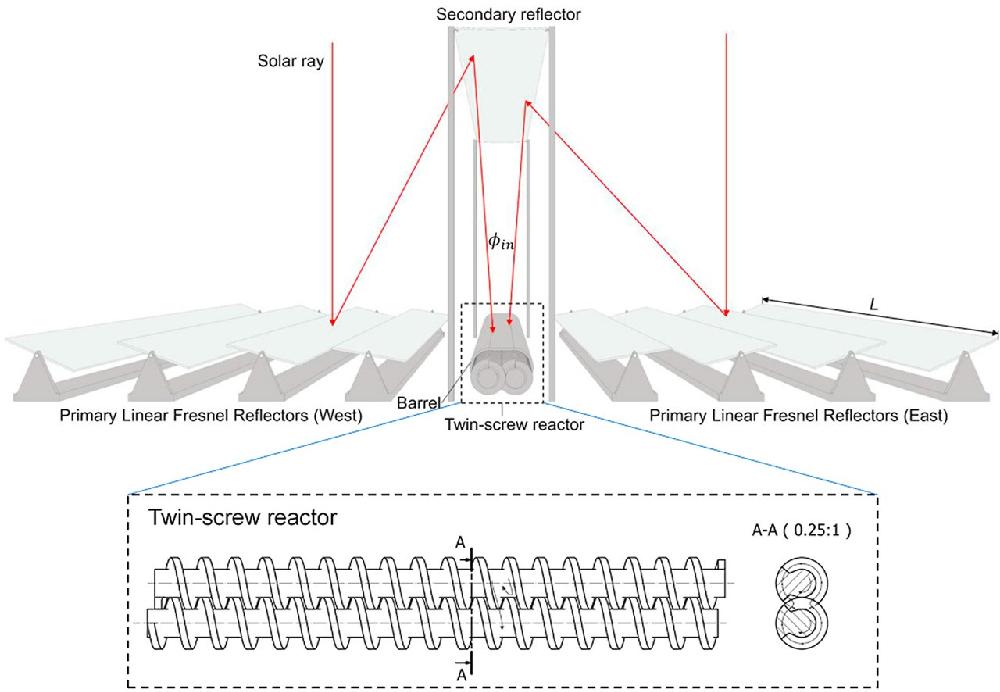A system that combines solar energy and a chemical reactor to get more from biomass has been designed
12/9/21
Researchers at the Universidad Carlos III de Madrid (UC3M) and the University of Rome "Tor Vergata” (Italy) have designed a new system that allows more to be got from biomass (such as forest and agricultural waste) thanks to a chemical reactor that works with a small solar power facility.

Biological waste contains a large amount of energy, if used properly. This is known as biomass, in other words, plant and other vegetable remains, as well as animal or household waste, for example. According to experts, these bio-residues could become a viable alternative source of energy. In this way, the sustainable processing of biomass allows high value-added products to be obtained and has become a good alternative in energy production, in the context of an increasing world population and the progressive depletion of natural resources.
These bio-residues are characterised by high humidity, which requires a drying pre-treatment process before they are processed using conventional thermal technologies (such as pyrolysis, gasification, or dry torrefaction). “This is not an economic option, as a significant amount of energy is used for the drying pre-treatment. In order to solve this, hydrothermal biomass carbonisation (HTC) could be an interesting technology that could be used to process this waste, as the drying pre-treatment is not needed,” explains Jesús Gómez Hernández, from the UC3M’s Department of Thermal and Fluids Engineering’s Energy Systems Engineering research group.
He is one of the authors of an article that was recently published in the scientific journal Renewable Energy, which details how HTC can be used in conjunction with a solar power facility to make the process more sustainable and extract energy from pine residues, corn stover, or rice husks, for example. “The products obtained could be applied to energy production processes, the improvement of soil substrates, supercapacitors, and bio-refineries to create a fossil-fuel-free economy, opening a technological path toward a circular economy,” say the authors of this paper.
The HTC consists of a thermochemical treatment in order to process the biomass in a reactor with hot water (between 180 and 250 degrees) at a high pressure (from 10 to 40 bar) to obtain a high value-added product: hydrocarbon. “In other words, the natural process for the formation of coal from biomass is reproduced under laboratory conditions,” explains Jesús Gómez Hernández. The main drawback is that HTC requires a lot of energy. It is at this point that researchers have introduced an innovation by using another renewable energy source: solar energy.
“Our work analytically models an HTC process for twin-screw reactors coupled to a linear beam-down solar field (LBD) in order to be sustainable in terms of energy,” note the researchers. The system would operate roughly as follows: two sets of reflective mirrors redirect the solar rays to another secondary mirror that concentrates all the solar energy on the screw reactor, which is installed on the floor due to its weight. They have found that this could extract energy in a renewable and sustainable way from different lignocellulosic biomasses, the most abundant raw material for bio-fuel production available on Earth.
More information:
J.V. Briongos, S. Taramona, J. Gómez-Hernández, V. Mulone, D. Santana (2021). Solar and biomass hybridization through hydrothermal carbonization,Renewable Energy, Volume 177, Pages 268-279,ISSN 0960-1481, https://doi.org/10.1016/j.renene.2021.05.146. https://www.sciencedirect.com/science/article/pii/S0960148121008296
--------------------